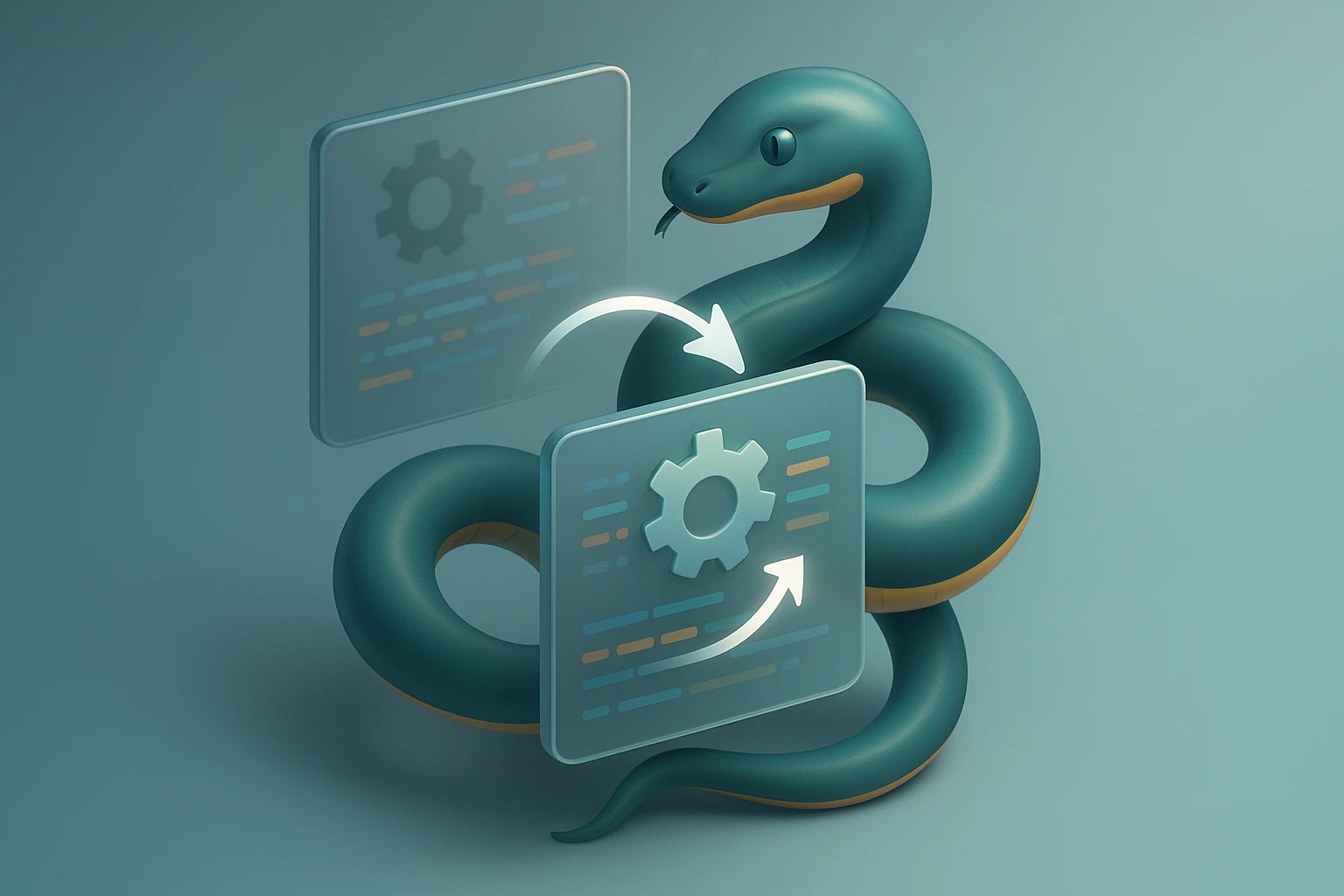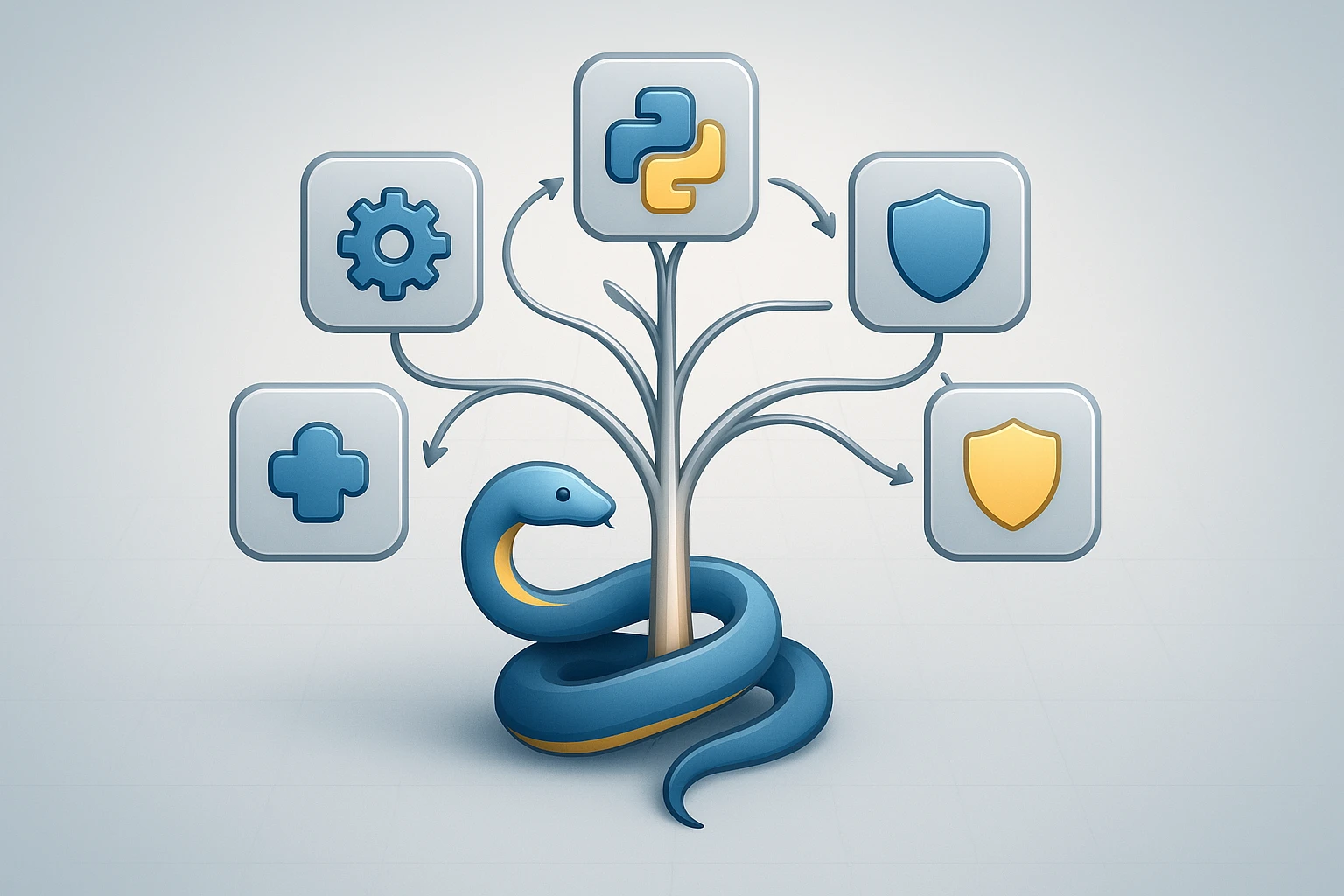What Is the Difference Between pip and conda?
Comparison of pip vs conda: pip installs Python packages from PyPI and handles Python deps; conda manages packages, environments, and binaries across languages via conda channels.!

Understanding pip and conda: A Comprehensive Guide
Managing Python packages and environments can feel overwhelming, especially when you're confronted with multiple tools that seem to do similar things. The choice between pip and conda affects not just how you install packages, but how you structure your entire development workflow, manage dependencies, and ensure reproducibility across different systems. Understanding these tools deeply can save you countless hours of troubleshooting and make your development process significantly smoother.
Both pip and conda serve as package managers in the Python ecosystem, but they approach the problem from fundamentally different angles. While pip focuses exclusively on Python packages from the Python Package Index (PyPI), conda takes a broader, language-agnostic approach that handles both Python and non-Python dependencies. This distinction might seem subtle at first, but it has profound implications for how you build and maintain your projects.
Throughout this exploration, you'll discover the technical differences between these tools, understand when to use each one, learn about their respective strengths and limitations, and gain practical insights into managing complex development environments. Whether you're a data scientist working with scientific libraries, a web developer building applications, or someone just starting their Python journey, this guide will equip you with the knowledge to make informed decisions about your package management strategy.
Understanding the Fundamental Architecture
The architectural differences between pip and conda reflect their distinct philosophies about package management. pip operates as a Python-specific package installer that retrieves packages from PyPI and installs them into your Python environment. It was designed with simplicity in mind, focusing on doing one thing well: installing Python packages. When you use pip, you're working within the Python ecosystem exclusively, and the tool assumes you have all necessary system-level dependencies already in place.
Conda, on the other hand, emerged from the scientific Python community's need for more comprehensive dependency management. It functions as both a package manager and an environment manager, handling not just Python packages but also system libraries, compilers, and tools written in other languages. This makes conda particularly powerful when working with complex scientific computing stacks that require specific versions of libraries like BLAS, LAPACK, or CUDA.
Package Sources and Repositories
The source of packages represents one of the most significant differences between these tools. pip draws from the Python Package Index, which hosts over 400,000 Python packages contributed by developers worldwide. PyPI uses a relatively permissive upload process, allowing package authors to publish their work quickly. This openness contributes to PyPI's massive size and variety, but it also means that package quality and maintenance can vary considerably.
Conda retrieves packages primarily from the Anaconda repository and conda-forge, a community-driven collection of recipes and build infrastructure. These repositories contain fewer packages than PyPI, but each package undergoes a build process that ensures compatibility across different platforms. The conda ecosystem emphasizes reproducibility and stability, with packages tested together to minimize conflicts.
| Aspect | pip | conda |
|---|---|---|
| Primary Repository | Python Package Index (PyPI) | Anaconda Repository, conda-forge |
| Number of Packages | 400,000+ | ~20,000 (main), ~15,000 (conda-forge) |
| Package Types | Python only | Python, R, C/C++, system libraries |
| Binary Distribution | Wheels (platform-specific) | Built for specific platforms |
| Compilation Required | Sometimes (source distributions) | Rarely (pre-compiled binaries) |
| Update Frequency | Immediate upon upload | After build and testing |
Dependency Resolution Mechanisms
How these tools resolve dependencies reveals much about their design philosophy. pip historically used a relatively simple dependency resolution algorithm that installed packages sequentially. When you installed package A, pip would then install A's dependencies, then those dependencies' dependencies, and so on. This approach could lead to conflicts where different packages required incompatible versions of the same dependency. Recent versions of pip have improved significantly with a more sophisticated resolver, but the fundamental challenge remains.
"The difference in dependency resolution between pip and conda isn't just technical—it represents two different philosophies about how to handle the inherent complexity of software dependencies."
Conda employs a SAT (satisfiability) solver that considers all dependencies simultaneously before installing anything. This approach treats dependency resolution as a constraint satisfaction problem, attempting to find a set of package versions that satisfies all requirements. While this makes conda's installation process slower, it dramatically reduces the likelihood of ending up with an inconsistent environment where packages conflict with each other.
Environment Management Capabilities
The way you create and manage isolated environments differs substantially between pip and conda. With pip, environment management typically relies on external tools like virtualenv or venv. These tools create isolated Python environments by copying or symlinking Python binaries and creating separate directories for installed packages. A virtual environment created with venv or virtualenv contains only Python packages, and it still depends on the system Python installation for the core interpreter.
Conda's environment management is built into the tool itself, offering a more integrated experience. When you create a conda environment, you're not just isolating Python packages—you're creating a completely separate installation that can include its own Python interpreter, system libraries, and even non-Python tools. This isolation is more complete than what pip's companion tools provide, making conda environments truly self-contained.
Creating and Activating Environments
The workflow for creating environments reflects these architectural differences. With pip and venv, you might create an environment like this:
- 🔧 Create a new virtual environment in a specific directory
- ⚡ Activate the environment using platform-specific activation scripts
- 📦 Install packages using pip while the environment is active
- 📝 Export requirements to a text file for reproducibility
- 🔄 Recreate the environment on another system by installing from the requirements file
Conda streamlines this process with a more integrated approach. You can create an environment, specify its Python version, and install initial packages all in a single command. Conda environments are managed centrally rather than scattered across your filesystem, making them easier to track and manage. The activation process is also more uniform across different operating systems, reducing platform-specific friction.
Sharing and Reproducing Environments
Reproducibility stands as one of the most critical concerns in modern software development, particularly in data science and research contexts. pip addresses this through requirements files, which list package names and versions. However, requirements files have limitations—they capture only Python packages, not system-level dependencies, and they may not perfectly reproduce an environment across different platforms due to variations in how packages are built.
Conda offers environment.yml files that capture more complete environment specifications. These files can include not just Python packages but also the Python version itself, system libraries, and packages from multiple channels. Conda also provides more precise control over package versions and builds, including build numbers that ensure you get exactly the same binary package when recreating an environment.
"Reproducibility isn't just about listing package versions—it's about capturing the entire dependency tree, including system-level components that pip simply cannot manage."
Performance and Resource Implications
The performance characteristics of pip and conda differ in ways that matter for daily development work. pip generally installs packages faster because it uses a simpler dependency resolution algorithm and often downloads smaller package files. When installing pure Python packages without complex dependencies, pip's speed advantage can be quite noticeable. The tool's straightforward approach means less computational overhead during the installation process.
Conda's more thorough dependency resolution takes longer, sometimes significantly so when dealing with complex environments containing many packages. The SAT solver needs to evaluate numerous potential combinations of package versions to find a compatible set. This computational cost increases with the number of packages and the complexity of their dependency relationships. However, this upfront time investment often prevents problems that would take much longer to debug later.
Disk Space and Environment Size
Disk space usage represents another important consideration. pip installations tend to be more compact because they install only Python packages and rely on system libraries for compiled dependencies. A typical pip-based virtual environment might consume a few hundred megabytes, depending on the packages installed. This lighter footprint makes pip attractive when disk space is limited or when you need to create many environments.
Conda environments typically consume more disk space because they include complete, self-contained installations. A conda environment might be several gigabytes, especially if it includes scientific computing libraries with large binary components. Conda does implement some space-saving measures through hard links and package caching, but the fundamental approach of including all dependencies results in larger environments. This trade-off between disk space and completeness is a key consideration when choosing between the tools.
| Performance Metric | pip | conda |
|---|---|---|
| Installation Speed | Fast (simple packages) | Slower (complex resolution) |
| Dependency Resolution Time | Quick (sequential) | Longer (SAT solver) |
| Typical Environment Size | 200-500 MB | 1-5 GB |
| Network Bandwidth Usage | Lower (smaller packages) | Higher (pre-compiled binaries) |
| Conflict Detection | After installation (newer versions) | Before installation |
| Update Operations | Fast for single packages | Slow (recalculates all dependencies) |
Practical Use Cases and Recommendations
Choosing between pip and conda isn't about finding the objectively "better" tool—it's about matching the tool to your specific needs and context. Different scenarios favor different approaches, and understanding these nuances helps you make decisions that enhance rather than hinder your workflow.
When pip Excels
pip shines in scenarios where you're working primarily with pure Python packages and where speed and simplicity matter. Web development projects using frameworks like Django or Flask typically work well with pip because these frameworks and their ecosystems are designed around Python's native packaging tools. The vast selection of packages on PyPI means you'll rarely encounter a Python package that isn't available through pip.
Deployment scenarios often favor pip because it integrates seamlessly with containerization tools like Docker. When building Docker images, pip's smaller footprint results in more compact images that download and deploy faster. The simplicity of pip also makes it easier to understand and debug when things go wrong, which matters when you're troubleshooting deployment issues in production environments.
Development workflows that emphasize continuous integration and automated testing often benefit from pip's speed. When you're running tests frequently and need to install dependencies quickly, pip's faster installation times can significantly reduce feedback cycles. The tool's straightforward behavior also makes it easier to write reliable automation scripts.
When conda Provides Advantages
Conda becomes the superior choice when working with scientific computing, data science, or machine learning projects. These domains frequently require packages with complex compiled dependencies—libraries like NumPy, SciPy, TensorFlow, and PyTorch depend on highly optimized linear algebra libraries, CUDA for GPU acceleration, and other system-level components. Conda's ability to manage these non-Python dependencies eliminates a major source of installation headaches.
"In scientific computing, the ability to reliably install complex packages like TensorFlow with GPU support across different platforms isn't a convenience—it's a necessity that conda addresses better than any alternative."
Cross-platform development benefits significantly from conda's approach. When you need to ensure that your environment works identically on Windows, macOS, and Linux, conda's pre-built binaries and comprehensive dependency management provide much stronger guarantees than pip. The platform-specific compilation issues that plague some pip installations simply don't occur with conda's pre-compiled packages.
Research and academic contexts, where reproducibility is paramount, strongly favor conda. The ability to capture complete environment specifications, including system libraries and even the Python version itself, makes it much easier to share work with colleagues or publish reproducible research. Conda's environment files provide a more complete picture of the computational environment than pip's requirements files can.
Hybrid Approaches
Many practitioners find that combining both tools offers the best of both worlds. You can use conda to manage environments and install complex scientific packages, then use pip within those conda environments to install pure Python packages that aren't available through conda channels. This hybrid approach is explicitly supported—conda environments include pip, and conda can track pip-installed packages in its environment specifications.
The key to successful hybrid usage is understanding the precedence and interaction between the tools. Generally, you should install packages with conda first, establishing the foundation of system libraries and complex dependencies. Then use pip for packages that are only available on PyPI or that need to be installed from source repositories. This order minimizes the risk of conflicts and ensures that conda's dependency resolver has the information it needs.
Technical Implementation Details
Understanding how pip and conda work under the hood helps explain their different behaviors and capabilities. pip installs packages by downloading them from PyPI and running their setup scripts. For pure Python packages, this process is straightforward—the package files are simply copied into the appropriate site-packages directory. For packages with C extensions or other compiled components, pip may need to compile the code during installation, which requires having appropriate compilers and development libraries installed on your system.
Package Distribution Formats
pip works with two main distribution formats: source distributions (sdist) and wheels. Source distributions contain the raw source code and require compilation if the package includes C extensions. Wheels are pre-built binary distributions that can be installed without compilation. The availability of wheels for your platform significantly affects pip installation speed and reliability. When wheels aren't available, you might encounter compilation errors if you lack the necessary build tools.
Conda packages are always pre-compiled for specific platforms and Python versions. Each conda package is a compressed tarball containing the compiled code, metadata, and installation instructions. This approach eliminates compilation during installation but requires the conda ecosystem to build and maintain packages for multiple platform combinations. The conda-forge community has developed sophisticated infrastructure to automate this building process across different operating systems and architectures.
Metadata and Dependency Specifications
The metadata format used by each tool reflects its design philosophy. pip packages include metadata in formats defined by Python Enhancement Proposals (PEPs), specifying dependencies using Python's packaging standards. This metadata describes Python-level dependencies but cannot express requirements for system libraries or non-Python tools. The expressiveness of pip's dependency specifications is limited to what Python's packaging ecosystem supports.
Conda's metadata format is more extensive, allowing packages to specify dependencies on any other conda package, regardless of language. A Python package in conda can declare dependencies on C libraries, Fortran compilers, or R packages. This richer metadata enables conda's comprehensive dependency management but also means that creating conda packages requires more effort than publishing to PyPI.
"The metadata format isn't just a technical detail—it defines the boundaries of what's possible with each tool and shapes the entire ecosystem that grows around it."
Ecosystem and Community Considerations
The communities and ecosystems surrounding pip and conda have distinct characteristics that influence the tools' evolution and the support you can expect. pip benefits from being the official Python packaging tool, with development guided by the Python Packaging Authority and formalized through the PEP process. This official status ensures long-term support and alignment with Python's development direction.
The pip ecosystem is vast and decentralized. Anyone can publish packages to PyPI with minimal barriers, resulting in an enormous and diverse collection of packages. This openness accelerates innovation and ensures that niche use cases are well-served, but it also means that package quality varies widely. You'll find everything from meticulously maintained packages by large organizations to abandoned experiments and proof-of-concept code.
Conda's Community Structure
Conda's ecosystem is more centralized and curated. The main Anaconda repository is managed by Anaconda, Inc., which maintains quality standards and provides commercial support options. The conda-forge channel operates as a community-driven alternative, with a more open contribution model but still maintaining build and testing standards that exceed PyPI's requirements. This curation means fewer packages but generally higher reliability and better cross-platform support.
The scientific Python community has strongly embraced conda, making it the de facto standard for many data science and research applications. Major scientific computing libraries prioritize conda packages, often providing conda builds before wheels are available for pip. This community alignment creates network effects—if you're working in scientific computing, using conda makes it easier to collaborate with others and follow established practices.
Corporate and Enterprise Considerations
Enterprise environments introduce additional considerations. pip's simplicity and official status make it easier to integrate with corporate security policies and approval processes. Many organizations already have processes for managing Python packages and PyPI access, making pip the path of least resistance. The tool's widespread use also means that corporate IT departments are more likely to have experience supporting it.
Conda offers advantages in enterprise contexts that need stronger reproducibility guarantees or work extensively with scientific computing. Anaconda, Inc. provides commercial products like Anaconda Team and Anaconda Enterprise that add features like package security scanning, private repositories, and enhanced support. These commercial offerings can justify conda adoption in organizations that need enterprise-grade support and features.
"In enterprise environments, the choice between pip and conda often comes down to organizational factors—existing infrastructure, team expertise, and corporate policies—rather than purely technical considerations."
Evolution and Future Directions
Both pip and conda continue to evolve, with recent developments addressing historical limitations and improving user experience. pip has made significant strides in dependency resolution with its new resolver, which became the default in pip 20.3. This resolver brings pip closer to conda's approach by considering all dependencies together rather than sequentially. The improvement reduces conflicts and makes pip installations more reliable, though the fundamental limitation of handling only Python packages remains.
Performance improvements have been a focus for both tools. pip has worked on optimizing download speeds and reducing installation overhead. Conda has invested in faster dependency resolution through projects like mamba, a reimplementation of conda's core functionality in C++ that dramatically speeds up environment solving and package installation. Mamba can serve as a drop-in replacement for conda, offering the same functionality with significantly better performance.
Emerging Standards and Interoperability
The Python packaging ecosystem is moving toward better standardization and interoperability. PEP 582 proposes local package directories that could reduce the need for explicit environment activation. PEP 621 standardizes project metadata in pyproject.toml files, making it easier for different tools to work together. These developments may eventually reduce the friction between different package management approaches.
Conda has also worked on better integration with pip and the broader Python ecosystem. Recent conda versions handle pip-installed packages more gracefully, tracking them in environment specifications and considering them during dependency resolution. This improved interoperability makes hybrid workflows more reliable and reduces the risk of conflicts when using both tools together.
Making the Right Choice for Your Projects
Selecting between pip and conda requires evaluating your specific requirements against each tool's strengths. Start by considering your dependencies—if you're working primarily with pure Python packages, pip's simplicity and speed make it an excellent choice. If your project requires scientific computing libraries, machine learning frameworks, or other packages with complex compiled dependencies, conda's comprehensive dependency management will save you considerable trouble.
Platform requirements matter significantly. If you need to ensure consistent behavior across Windows, macOS, and Linux, conda's pre-built binaries and comprehensive dependency management provide stronger guarantees. If you're developing primarily for Linux servers or containers, pip's lighter footprint and faster installation may be more valuable.
Team and Collaboration Factors
Consider your team's expertise and existing practices. If your team already has conda experience and uses it effectively, maintaining that consistency often outweighs technical arguments for switching. Conversely, if your team is comfortable with pip and your project doesn't have complex dependencies, introducing conda adds complexity without clear benefits. Tool choices should align with team capabilities and established workflows.
Collaboration contexts influence tool selection as well. If you're contributing to open-source projects, check what tools the project uses and follow those conventions. If you're working in academic research, conda's stronger reproducibility guarantees and widespread adoption in scientific computing make it a natural choice. For web development and general Python programming, pip's ubiquity and simplicity often make it the better option.
"The best package manager is the one that solves your actual problems without creating new ones—and that answer differs depending on what you're building and who you're building it with."
Transitioning Between Tools
If you need to transition from one tool to another, approach the change methodically. Moving from pip to conda typically involves creating a conda environment, installing conda packages for your dependencies where available, and using pip within the conda environment for packages not available through conda channels. Export your pip requirements first to ensure you don't lose track of any dependencies during the transition.
Moving from conda to pip requires more care because you're giving up conda's management of system-level dependencies. Ensure that your system has all necessary libraries and tools installed before attempting the transition. You may need to install system packages using your operating system's package manager to replace what conda was providing. Test thoroughly to ensure that everything works correctly after the transition.
Can I use pip and conda together in the same environment?
Yes, you can use pip within conda environments, and this is actually a common practice. Conda environments include pip, and you can install packages with pip after setting up your base dependencies with conda. However, it's generally recommended to install packages with conda first when available, then use pip for packages that aren't in conda repositories. Conda can track pip-installed packages in environment files, but mixing the tools can sometimes lead to dependency conflicts that are harder to resolve.
Why does conda take so long to solve environments?
Conda's environment solving process is computationally intensive because it uses a SAT solver to find compatible versions of all packages simultaneously. This approach considers the entire dependency graph rather than installing packages sequentially, which ensures consistency but requires evaluating many potential combinations. The time increases with the number of packages and the complexity of their dependencies. Tools like mamba offer significantly faster solving by reimplementing conda's core functionality with performance optimizations.
Which tool should I use for deploying Python applications?
For deploying Python applications, pip is generally preferred because it creates smaller deployment artifacts and integrates better with containerization tools like Docker. Most production environments use pip with requirements files or newer tools like Poetry for dependency management. Conda environments tend to be larger and include more than necessary for production deployment. However, if your application has complex scientific computing dependencies that are difficult to compile, conda might be worth the extra size for reliable deployment.
How do I convert a requirements.txt file to an environment.yml file?
There's no automatic conversion that perfectly translates between these formats because they capture different information. You can create a conda environment and install packages from requirements.txt using pip, then export the conda environment specification. However, this won't give you native conda packages. For a better result, manually create an environment.yml file, looking up conda package names for your dependencies and using conda packages where available. Some packages have different names in conda repositories than on PyPI, so this process requires some research and testing.
Is it possible to install conda without the full Anaconda distribution?
Yes, Miniconda provides a minimal conda installation without the hundreds of packages included in the full Anaconda distribution. Miniconda includes only conda, Python, and a few essential packages, allowing you to install exactly what you need. This approach gives you conda's environment management and dependency resolution capabilities without the large initial download and disk space requirements of Anaconda. Miniconda is ideal when you want conda's features but prefer to explicitly install only the packages you need.
Why are some packages available on PyPI but not in conda repositories?
PyPI has a much lower barrier to entry than conda repositories—anyone can upload a package to PyPI with minimal requirements, while conda packages must be built for specific platforms and pass through a more structured process. Creating conda packages requires more effort because they need to be compiled for different operating systems and Python versions. Many smaller or newer Python packages haven't been packaged for conda yet, especially if they're pure Python packages without compiled dependencies where conda's advantages are less pronounced. For these packages, using pip within a conda environment is the standard solution.
Can I create my own conda channel for private packages?
Yes, you can create custom conda channels to host your own packages or mirror public packages for internal use. Conda supports both local channels (directories on your filesystem or network) and remote channels (hosted on web servers or cloud storage). Anaconda provides Anaconda Repository as a commercial solution for hosting private packages with additional features like access control and package scanning. For simpler needs, you can build conda packages and host them on any web server or file sharing system, then configure conda to use your custom channel.
What happens if I upgrade a package with pip in a conda environment?
When you upgrade a package with pip in a conda environment, conda loses track of that package's exact state because pip's installation bypasses conda's dependency tracking. This can lead to situations where conda's solver doesn't have complete information about your environment, potentially causing conflicts during future conda operations. Recent conda versions have improved pip integration, but it's still best practice to use conda for upgrades when possible. If you must use pip, be aware that you may need to recreate the environment if conda operations start failing due to inconsistencies.
Sponsor message — This article is made possible by Dargslan.com, a publisher of practical, no-fluff IT & developer workbooks.
Why Dargslan.com?
If you prefer doing over endless theory, Dargslan’s titles are built for you. Every workbook focuses on skills you can apply the same day—server hardening, Linux one-liners, PowerShell for admins, Python automation, cloud basics, and more.




